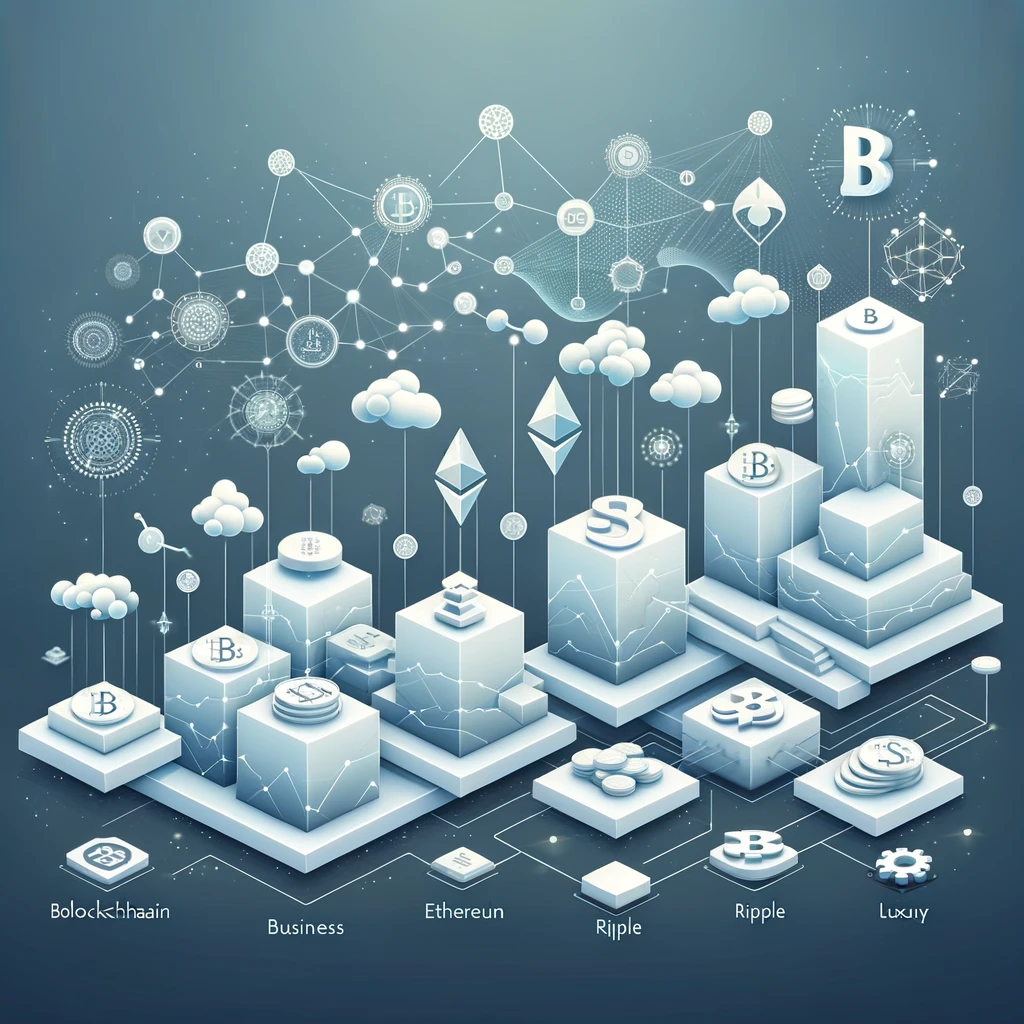Democratizing Trust. Distributed Ledger Technologies and The Future of Data Management and Security
Distributed Ledger Technologies
Explanation of what distributed ledger technologies are and why they matter
Distributed ledger technologies (DLTs) are a revolutionary set of tools for managing and sharing data in a secure, decentralized, and transparent way. At their core, DLTs are a type of database that can be shared and updated across a network of computers, without the need for a centralized authority or intermediary. This means that DLTs have the potential to transform the way we store, manage, and exchange data, from financial transactions and identity verification to supply chain management and voting systems. In short, DLTs are democratizing trust by allowing users to share and verify data without relying on a single point of control or failure.
Brief history of distributed ledger technologies
The roots of DLTs can be traced back to the development of the first blockchain, a type of DLT that underpins the digital currency Bitcoin. Since then, DLTs have evolved and diversified, with new platforms like Ethereum, Ripple, and Corda offering different features and use cases. Today, DLTs are being explored and implemented in a wide range of industries and sectors, with some experts predicting that they could fundamentally change the way we do business and interact with each other. In this deep dive, we'll explore the potential of DLTs and what they could mean for the future of data management and security.
Distributed Ledger Technology in with a Comparison with Centralized Systems and Advantages and disadvantages of distributed ledger technology
Distributed ledger technology, or DLT, is a database spread across a computer network. In this network, every computer is a node, and each node has a copy of the database. Each copy of the database is the same and is updated in real-time. Transactions are verified by a consensus mechanism, meaning that all nodes on the network must agree on the validity of the transaction before it is added to the database. This ensures that the data on the network is immutable and transparent.
In comparison to centralized systems, which rely on a central authority to manage and maintain the database, DLT is decentralized, meaning that no single entity controls the database. This makes it more secure and resilient against attacks and corruption. DLT can also be more efficient, as there is no need for intermediaries or third parties to facilitate transactions.
The advantages of DLT extend beyond security and efficiency. DLT also offers transparency and trust in data management. Because each node has a copy of the database, there is no need to rely on a single source of truth. This makes it easier to validate data and provides a higher level of trust in the information being shared.
However, there are also disadvantages to DLT. For example, the consensus mechanism can be slow and resource-intensive, making it more difficult to scale to handle large volumes of transactions. Additionally, DLT is a relatively new technology, and there are still technical and regulatory challenges that need to be addressed before it can be widely adopted.
Despite these challenges, DLT has the potential to revolutionize the way we manage and secure data, and could ultimately lead to a more democratized and secure internet.
Types of Distributed Ledger Technologies
A. Overview of the different types of distributed ledger technologies, including blockchain, directed acyclic graphs (DAGs), and hashgraph.
B. Explanation of public and private blockchains. Public blockchains, such as the Bitcoin and Ethereum networks, are open to everyone, while private blockchains restrict access to a select group of participants. Private blockchains are typically used by businesses and organizations that require more control and privacy.
C. Comparison of different distributed ledger technologies. While all distributed ledger technologies aim to provide a decentralized, secure, and transparent means of managing data, each technology has its own unique strengths and weaknesses. For example, blockchain is known for its security and immutability, while DAGs are designed to be more scalable and efficient.
Other Distributed Ledger Technologies
A. Overview of other distributed ledger technologies
B. Explanation of Directed Acyclic Graphs (DAGs), Hashgraph, and Tangle
C. Comparison of different distributed ledger technologies
While blockchain is the most well-known and widely adopted distributed ledger technology, there are other alternatives that offer different advantages and use cases. One of these alternatives is Directed Acyclic Graphs (DAGs), which do not use blocks like blockchain but instead form a directed graph structure of transactions. This allows for faster transaction processing and scalability, but also introduces new challenges such as security concerns.
Another alternative is Hashgraph, which uses a consensus algorithm that allows for high throughput, low latency, and high security. Hashgraph also offers fairness and eliminates the need for expensive proof-of-work computations. Tangle is another distributed ledger technology that has gained attention due to its use in IOTA, a platform for the Internet of Things. Tangle uses a directed acyclic graph structure and allows for feeless transactions, making it a viable solution for micropayments.
Each of these distributed ledger technologies has its own advantages and disadvantages, and choosing the right one depends on the specific use case and requirements. While blockchain remains the dominant distributed ledger technology, it's important to be aware of these other alternatives as they continue to develop and gain adoption.
Overall, the choice of distributed ledger technology depends on the specific use case and the desired balance between security, scalability, and other factors.
Blockchain Technology
A. Explanation of blockchain technology
Blockchain technology is a type of distributed ledger technology (DLT) that records transactions across a decentralized network of computers. The records, or blocks, are cryptographically secured and linked together in a chain, creating a tamper-evident and transparent system.
B. How blockchain works
In a blockchain network, transactions are verified by network participants called nodes. Once verified, the transactions are combined into a block and added to the blockchain. Each block contains a unique code, known as a hash, and the hash of the previous block in the chain, creating a permanent and unalterable record.
C. Different types of blockchain
There are several types of blockchain, including public, private, and hybrid. Public blockchains, like Bitcoin and Ethereum, are open to anyone, while private blockchains are limited to a specific group of participants. Hybrid blockchains, as the name suggests, are a combination of both public and private blockchains.
D. Advantages and disadvantages of blockchain technology
Advantages of blockchain technology include its immutability, transparency, and security. Once a block is added to the chain, it cannot be altered or deleted, making it a secure and tamper-proof way to store data. However, blockchain technology also faces challenges in terms of scalability, energy consumption, and regulatory uncertainty. Despite these challenges, many industries, such as finance and supply chain management, are exploring the potential of blockchain technology to improve their operations.
Applications and Use Cases of Distributed Ledger Technologies
A. Overview of the various applications of distributed ledger technologies
Distributed ledger technologies have many potential applications, including financial services, supply chain management, voting systems, identity verification, and more. These technologies offer numerous benefits, such as increased transparency, security, and efficiency, which make them ideal for a variety of use cases.
B. Use cases for public and private blockchains
Public blockchains, such as Bitcoin and Ethereum, are best suited for decentralized applications and permissionless environments. Use cases for public blockchains include digital currencies, peer-to-peer payments, decentralized marketplaces, and more. Private blockchains, on the other hand, are better suited for permissioned environments, where only authorized parties can access the data. Use cases for private blockchains include supply chain management, enterprise resource planning, and more.
C. Real-world examples of distributed ledger technologies in action
There are many real-world examples of distributed ledger technologies in action. For example, the World Food Program is using blockchain technology to distribute food aid to Syrian refugees, while Walmart is using blockchain to track the origin of fresh produce in its supply chain. Other examples include the use of blockchain for digital identity verification, real estate transactions, and even voting systems in some countries. As more use cases are developed, distributed ledger technologies will continue to demonstrate their potential to transform various industries.
The Future of Distributed Ledger Technologies
A. Discussion of the potential future developments of distributed ledger technologies
As distributed ledger technologies continue to mature, the potential for their impact on various industries and sectors is growing. There are several potential future developments for distributed ledger technologies, including improvements in security, scalability, and speed. New use cases will emerge as the technology becomes more widely adopted.
B. The impact of emerging technologies like artificial intelligence on distributed ledger technologies
Artificial intelligence (AI) is another emerging technology that has the potential to greatly impact distributed ledger technologies. The integration of AI with distributed ledger technologies could lead to new, more efficient and intelligent applications. For example, AI algorithms could analyze data stored on a blockchain to identify patterns and trends.
C. Possibilities for the integration of distributed ledger technologies with other industries and sectors
The integration of distributed ledger technologies with other industries and sectors could create new opportunities for innovation and collaboration. For example, the healthcare industry could use distributed ledgers to securely share patient data between hospitals and clinics, while the energy sector could use distributed ledgers to track the production and distribution of energy in a more transparent and efficient manner.
Overall, the future of distributed ledger technologies is exciting and full of possibilities. As more organizations and individuals adopt these technologies, we will likely see new applications and use cases emerge that will continue to democratize trust and revolutionize data management and security.
Challenges and Limitations of Distributed Ledger Technologies
A. Explanation of the challenges and limitations of distributed ledger technologies
As with any emerging technology, distributed ledger technologies are not without their challenges and limitations. One of the main challenges is scalability. As more transactions are added to a distributed ledger, the time and computational resources needed to validate each transaction can increase, potentially slowing down the network. Additionally, interoperability between different types of distributed ledger technologies can be difficult, which can create silos in the market.
B. Issues related to scalability, interoperability, and regulatory compliance
Another key challenge is ensuring compliance with regulatory frameworks. Because distributed ledger technologies operate in a decentralized and transparent manner, it can be difficult to reconcile these characteristics with traditional regulatory frameworks that rely on centralized control and opaque reporting. Additionally, issues related to privacy, security, and identity verification can pose significant challenges.
C. Potential solutions to address these challenges and limitations
Developers and researchers are actively working to address these challenges and limitations. For example, scaling solutions such as sharding, sidechains, and off-chain transactions are being explored to help improve the scalability of distributed ledgers. Interoperability initiatives are also underway to help connect different types of distributed ledger technologies. In terms of regulatory compliance, efforts are being made to bridge the gap between traditional regulatory frameworks and the decentralized nature of distributed ledgers, such as through the development of regulatory sandboxes and other experimental frameworks. Finally, ongoing research is exploring the use of advanced encryption and authentication techniques to address privacy, security, and identity verification issues.
Conclusion
Distributed ledger technologies have the potential to revolutionize the way we manage data and trust. By providing a decentralized, secure, and transparent way to manage transactions and data, these technologies can empower individuals and organizations alike. As the technology continues to evolve and expand, we can expect to see even more innovative applications and use cases emerge. It's an exciting time for distributed ledger technologies, and the future looks bright for this transformative technology.






